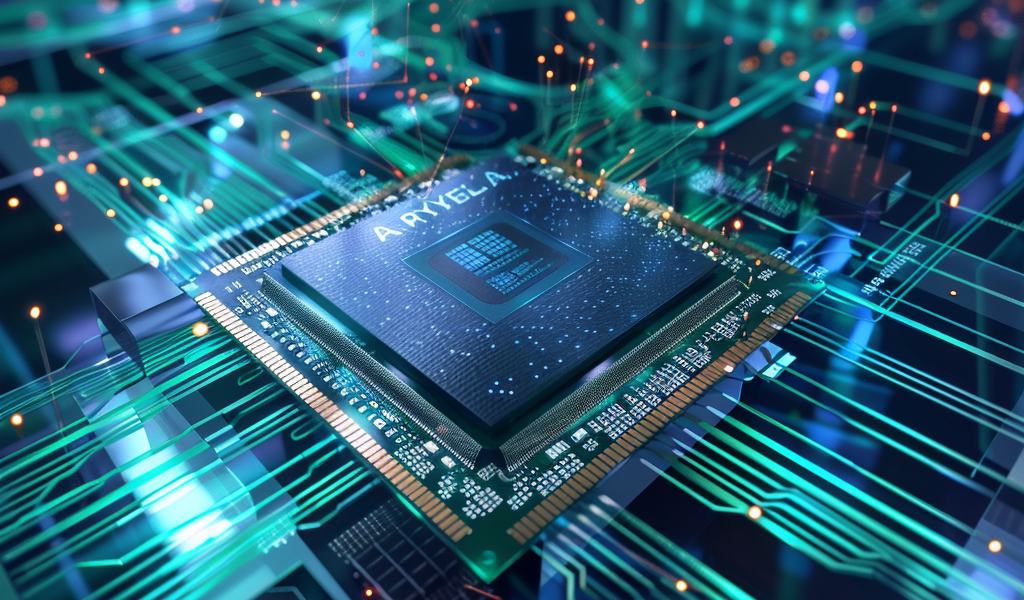The AMD Ryzen AI 9 HX 370: A Game Changer in Mobile Computing
At the recent Computex 2024 event, AMD made headlines with the unveiling of its highly anticipated Zen 5 microarchitecture. AMD CEO Dr. Lisa Su presented the company’s vision for the future of computing, showcasing both mobile and desktop products that promise to revolutionize performance in the coming years.
The centerpiece of this announcement was the launch of the Ryzen AI 300 series, codenamed Strix Point, which is powered by the innovative Zen 5 architecture. This new mobile system-on-chip (SoC) represents a significant leap forward in AMD’s technology, offering enhanced performance and efficiency tailored for modern computing demands.
Architectural Advancements
The Strix Point SoC is designed to deliver substantial improvements across AMD’s entire intellectual property (IP) portfolio. At the heart of this advancement is the Zen 5 CPU microarchitecture, which focuses on enhancing performance without relying solely on increased clock speeds. This approach allows AMD to achieve greater efficiency while maintaining competitive power levels.
In line with the industry’s growing focus on artificial intelligence, the Strix Point also integrates the latest XDNA 2-based neural processing unit (NPU), capable of delivering up to 50 trillion operations per second (TOPS). This integration marks a significant milestone in AMD’s commitment to AI performance, positioning the Ryzen AI 300 series as a formidable contender in mobile computing.
Enhanced Graphics Capabilities
Another key feature of the Ryzen AI 300 series is its upgraded integrated graphics processor, which utilizes the RDNA 3.5 graphics architecture. This transition to a more advanced graphics framework is expected to enhance visual performance in gaming, content creation, and other graphically intensive applications.
Heterogeneous CPU Design
AMD’s Strix Point also introduces a heterogeneous CPU design that incorporates both performance and efficiency cores. This innovative architecture aims to optimize overall performance in power-constrained devices, ensuring that users can enjoy a seamless experience without sacrificing battery life.
While AMD initially introduced compact Zen cores during the Zen 4 generation, the Ryzen AI 300 series marks the first instance where these cores have been included in the company’s flagship mobile silicon. This design choice enhances the total CPU core count and boosts performance in multi-threaded scenarios, making it an attractive option for users who require robust processing capabilities.
Product Lineup
The AMD Ryzen AI 300 series will debut with three key models, including the flagship Ryzen AI 9 HX 375, which features 12 CPU cores. This model is designed to cater to high-performance computing needs, making it suitable for demanding tasks such as gaming, video editing, and professional applications.
With the introduction of the Ryzen AI 300 series, AMD aims to solidify its position in the competitive mobile computing market, offering users a blend of cutting-edge technology and exceptional performance.
Performance Metrics
As part of the launch, AMD has provided insights into the expected performance metrics of the Ryzen AI 300 series. The new architecture is anticipated to deliver impressive results in both single-threaded and multi-threaded workloads, showcasing the efficiency of the Zen 5 cores combined with the additional capabilities of the compact Zen 5c cores.
In addition to CPU performance, the graphics capabilities of the RDNA 3.5 architecture are expected to enhance rendering and simulation tasks, making the Ryzen AI 300 series a compelling choice for creators and gamers alike.
Power Consumption and Efficiency
One of the primary goals of the Ryzen AI 300 series is to maximize power efficiency while delivering high performance. AMD has implemented several strategies to achieve this, including optimizing the manufacturing process and refining the architecture to reduce power consumption without compromising on speed.
This focus on efficiency is particularly important for mobile devices, where battery life is a critical factor for users. By balancing performance and power consumption, AMD aims to provide a solution that meets the demands of modern users who require portability without sacrificing capabilities.
AI Performance Capabilities
With the integration of advanced AI capabilities, the Ryzen AI 300 series is poised to enhance various applications, from machine learning to real-time data processing. The XDNA 2-based NPU will enable developers to leverage AI in their applications, providing users with smarter, more responsive devices.
As AI continues to play an increasingly significant role in technology, AMD’s commitment to integrating these capabilities into their mobile products positions them as a leader in the industry.
Market Impact and Future Prospects
The launch of the Ryzen AI 300 series is expected to have a significant impact on the mobile computing market. As AMD continues to innovate and push the boundaries of performance, consumers can anticipate a new era of powerful, efficient devices that cater to a wide range of needs.
With the competitive landscape constantly evolving, AMD’s focus on integrating cutting-edge technology into their products will likely drive further advancements in mobile computing, ensuring that users have access to the latest innovations.
As we look forward to the release of the Ryzen AI 300 series, the excitement surrounding AMD’s Zen 5 architecture and its capabilities is palpable. The future of mobile computing is bright, and AMD is at the forefront of this technological revolution.





